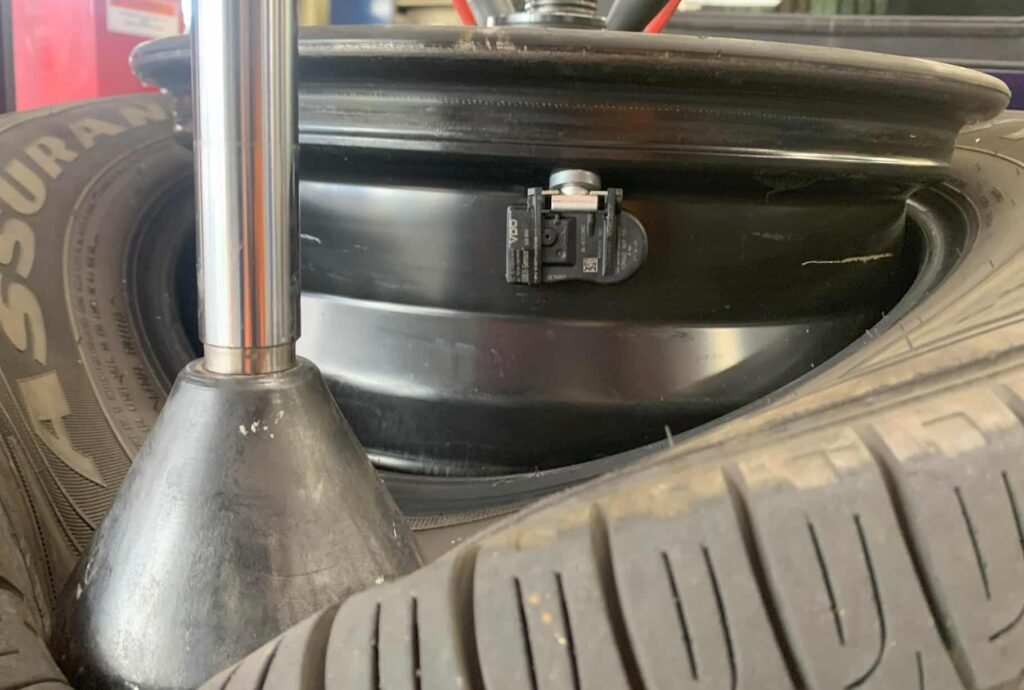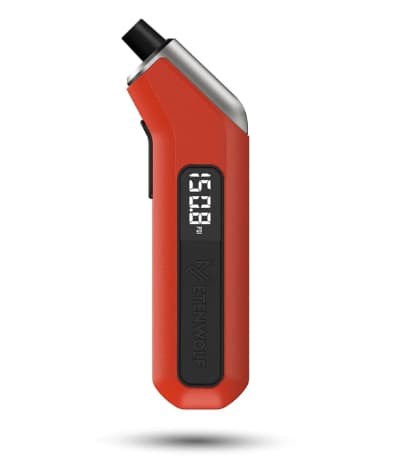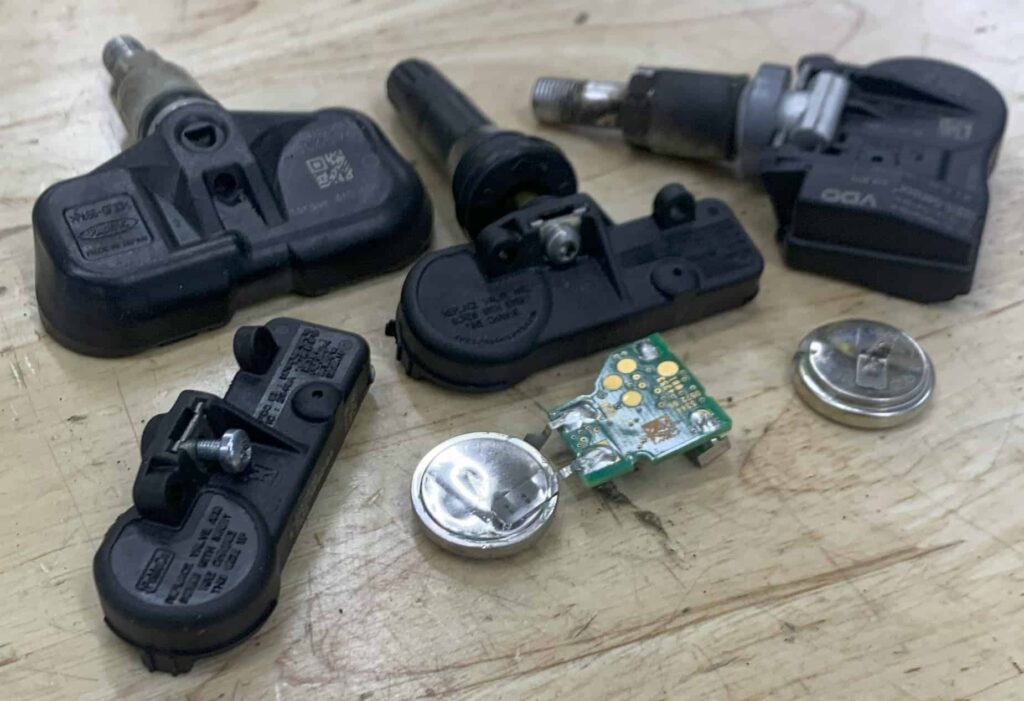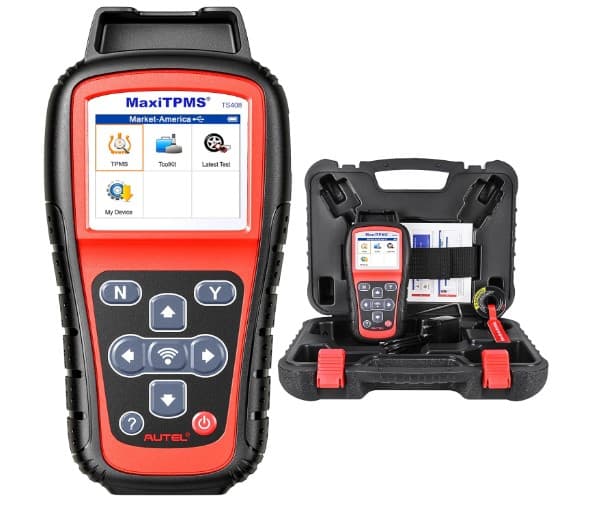The BYD Seal boasts a state-of-the-art system for monitoring tire pressure. Embedded sensors within each tire constantly measure and relay current pressure and temperature levels directly to the vehicle’s display, offering added ease and safety for the driver.
How Does the BYD Seal Tire Pressure System Work?
BYD Seal Tire Pressure Sensors
Every tire of the BYD Seal contains a tire pressure sensor encased in plastic. This encasement is fixed to the tip of the tire valve stem inside the tire. The sensor consists of a chip, a battery, and a radio transmitter. Powered by the battery, the chip gauges the internal air pressure and temperature of the tire. These readings are then sent via radio waves (at frequencies of either 315 MHz or 433 MHz) to the Seal’s TPMS (Tire Pressure Monitoring System) receiver module.
BYD Seal TPMS Receiver Module
In the BYD Seal, the TPMS receiver module collects air pressure data from the sensors in each of its four wheels. The TPMS receiver module is located within the vehicle. This data is subsequently transmitted to the BYD Seal’s central computer, commonly referred to as the Engine Control Unit (ECU) or Body Control Module (BCM).
BYD Seal ECU
The BYD Seal ECU is the vehicle’s main computer. The Engine Control Unit (ECU) scrutinizes the received tire pressure readings and compares them with BYD’s predefined air pressure norms. In instances where a tire’s pressure drops to less than 80% of the advised threshold of front tires 250 and rear tires 290 kPa (36/42 psi), the ECU activates a warning for low tire pressure on the Seal’s dashboard display.
Steps to Reset BYD Seal TPMS
Inflate the front tires of the BYD Seal tires to 250kPa (36 psi) and the rear tires to 290 kPa (42 psi) when the tires are cold.
Select the INFO button on the top of the information display screen.
Select STATUS.
Select RESET next to “Tyre Pressure”.
Drive the BYD Seal for 10 minutes at speeds exceeding 30 Kph (19 mph).
How to Access the Current Tire Pressure on the BYD Seal Instrument Cluster
Press the MENU/BACK button on the steering wheel.
Navigate to the DRIVING INFORMATION bar by pressing the left or right arrows.
Select tyre PRESSURE using the roller button.
BYD Seal Low Tire Pressure Alerts Explained
The BYD Seal tire pressure monitoring system has different tire fault warnings that each have different meanings and causes.
LOW TIRE PRESSURE
Every time the ignition of the BYD Seal is activated, the tire pressure warning light briefly illuminates on the information display. If the TPMS is functioning correctly, this warning light will extinguish a few seconds later. Conversely, if there’s a malfunction in the tire pressure monitoring system, the warning light will re-illuminate.
FLASHING TIRE PRESSURE FAULT WARNING
When the tire pressure warning light blinks, the information display screen shows the message “Please Check TPMS”, and the tire pressure value on the tire pressure information screen is “—“. This means there is a malfunction in the tire pressure system.
NO SIGNAL
If the tire pressure readout shows “No Signal,” this suggests that the tire pressure sensor in that specific tire position on the BYD Seal is either malfunctioning or damaged.
Functional Specifications of the BYD Seal's TPMS
When any tire on the BYD Seal dips below 200 kPa or 29 Psi in the front and 33 Psi in the rear (80% of the standard 250 kPa/36 Psi or 290 kPa/42 Psi)), the display screen’s tire pressure value turns yellow, indicating a tire pressure fault.
The tire pressure warning on the BYD Seal deactivates once the tire’s pressure is restored to above 95% of its normal air pressure level.
During travel, if any tire on the BYD Seal experiences rapid air loss exceeding BYD’s specified rate, the TPMS will sound a “rapid air loss alarm” within 15 seconds and identify the affected tire on the air pressure display.
The TPMS of the BYD Seal functions optimally when the vehicle travels at speeds exceeding 30 kph or 18 Mph.
A High Temperature warning is triggered if any tire’s temperature on the BYD Seal remains above 85 degrees Celsius (185 degrees Fahrenheit) for over 3 minutes, turning the tire pressure value on the display yellow. It’s advisable to stop and cool down the tire before continuing to drive in such instances. (stop driving to let the tire cool down.)
HOW TO CANCEL TIRE PRESSURE SYSTEM ALARMS
To turn off the tire pressure alarm, just press the right roller on the steering wheel.
STEPS TO CHECK TIRE PRESSURE FAULT INFORMATION
Rotate the right roller on the steering wheel to view specific details of the tire pressure warning for each tire.
What Can Trigger a Blinking Tire Pressure Fault Alert?
A yellow tire pressure value on the display, along with a tire pressure fault icon, denotes low air pressure in the associated tire of the BYD Seal. Likewise, a yellow tire temperature value on the information display indicates an abnormally high temperature in that tire.
If the tire pressure indicator on the BYD Seal flashes, it points to an issue within the tire pressure monitoring system itself. Such problems usually arise when one or more tire pressure sensors are unable to communicate properly with the BYD Seal’s TPMS module or the main computer systems (ECU). Potential causes for this include:
The battery in a tire pressure sensor might be low or completely depleted, requiring sensor replacement.
A sensor could be damaged, especially if new tires or wheels were recently installed.
Interference from external radio frequencies from nearby vehicles or electronic devices may disrupt the sensors or the TPMS module.
The use of non-standard or unauthorized tire pressure sensors or TPMS modules in the BYD Seal.
Operating the BYD Seal with a wheel lacking a tire pressure sensor. (spare tire)
Reasons the Low Tire Pressure Light is On
Excessively high or low tire pressure.
TPMS sensor batteries being low or completely exhausted.
Malfunctions in the BYD TPMS receiver module, ECU/BCM, or software glitches.
Radio frequency disruptions caused by nearby vehicles or electronic gadgets.
Decreases in ambient air temperature.
Overburdening the vehicle past its maximum load capacity or exceeding towing limits.
Application of tire chains.
Excessive tinting on the vehicle’s windows.
Variations in the temperature of the road surface.
TPMS sensor damage incurred during tire replacement or tire-related maintenance.
Neglecting the TPMS recalibration in the BYD Seal after tire inflation or servicing.
Physical harm to tires or wheels, including punctures, distortions, or damage to rims.
Valve stems being incorrectly fitted or defective.
WHY DOES A SHIFT IN AIR TEMPERATURE ACTIVATE THE LOW TIRE FAULT?
Weather fluctuations often activate the BYD Seal’s low tire pressure alert. Tire pressure typically shifts by approximately 1 psi (6.8 kPa) for every 10°F (around -12°C) change in air temperature. For example, a 50°F temperature decrease over the course of a 6 week period could reduce tire pressure from 34 psi (234 kPa) to 29psi (199 kPa), or possibly lower, which can trigger the low tire pressure warning in the BYD Seal.
Tire Inflation
Underinflation
Operating the BYD Seal with underinflated tires can result in several issues. Such a state not only diminishes the vehicle’s battery efficiency but also accelerates the wear on the outer portions of the tire tread. Tires that are not adequately inflated can negatively impact the vehicle’s handling, braking performance, and general safety.
Overinflation
Operating the BYD Seal with overinflated tires can lead to a less comfortable and stiffer driving experience and cause the tire tread to wear down mostly in the center of the tread rather than evenly across the entire tread surface.
Cold Tires
It’s advisable to check and adjust the tire pressure of the BYD Seal when the tires are cold, usually either before the vehicle is driven or after it has been stationary for a minimum of 3 hours since its last journey.
Warm Tires
Once you’ve driven your BYD Seal the tires warm up which naturally causes an elevation in air pressure by about 30-40 kPa (4-5 psi). Consequently, adjusting tire pressure while they are warm will lead to overinflation.
BYD SEAL TIRE AIR PRESSURE AND WHEEL SIZE
TIRE SIZE | Front Psi/kPa | Rear Psi/kPa |
225/50R18 | 36/250 | 42/290 |
235/45R19 | 36/250 | 42/290 |
BYD SEAL Tire Pressure Sensor Batteries
All four tire pressure sensors in the BYD Seal operate on a silver oxide battery, which is non-rechargeable and irreplaceable. When the battery in a tire pressure sensor runs out, the entire sensor must be replaced. After installing a new tire pressure sensor, it needs to be synchronized with the BYD Seal’s ECU using a TPMS programming device. BYD recommends inspecting and testing the tire pressure sensors yearly or after every 20,000 km.
Does Tire Pressure Affect BYD Seal Battery Range?
Underinflated tires increase rolling resistance, demanding more power from the BYD Seal’s electric motor, which consequently lowers the overall driving range of the vehicle. A reduction in tire pressure by just 10% can result in about a 3% decrease in the vehicle’s battery range.
Methods to Detect a Tire Leak
Inflate the deflating BYD tire to at least 275 kPa (40 Psi).
Create a mixture with water and liquid soap in a spray bottle.
Generously spray this soapy mixture all over the tire, ensuring to cover the bead area and the valve stem thoroughly.
Observe any bubble formations and follow these bubbles to their origin to precisely locate the leak.
Using a TPMS Programming & Diagnostic Tool
TPMS diagnostic tools are necessary when attempting to troubleshoot and zoom in on which BYD Seal tire pressure sensor is not working properly and why. They are capable of assessing each sensor, providing comprehensive information on factors including battery life, signal quality, tire heat, the sensor’s operating frequency in megahertz, and its exact position on the vehicle. If any TPMS sensors exhibit signs of weak battery or reduced signal quality, replacing these sensors is advised. TPMS diagnostic tools are also tire pressure sensor programming tools. This means that when you do replace a tire pressure sensor, you can use this tool to program the new sensor to the BYD Seal’s ECU and TPMS receiver module.
BYD Seal Tire Tips
Rotate tires every 10,000 kilometers (or 6,000 miles).
Refrain from mixing tire brands or sizes.
Replace all four tires at the same time.
After using BYD Seal tyre sealant on a leak, check the tyre and pressure sensor.
Different sizes of tyres or wheels on the BYD Seal may affect the ABS and electronic stability control systems.
Please note that this blog post contains Amazon affiliate links. This means that if you make a purchase through one of these links, we at TPMSRESET.COM may earn a small commission at no extra cost to you. We only recommend products that we personally use and believe in. Thank you for supporting us.





